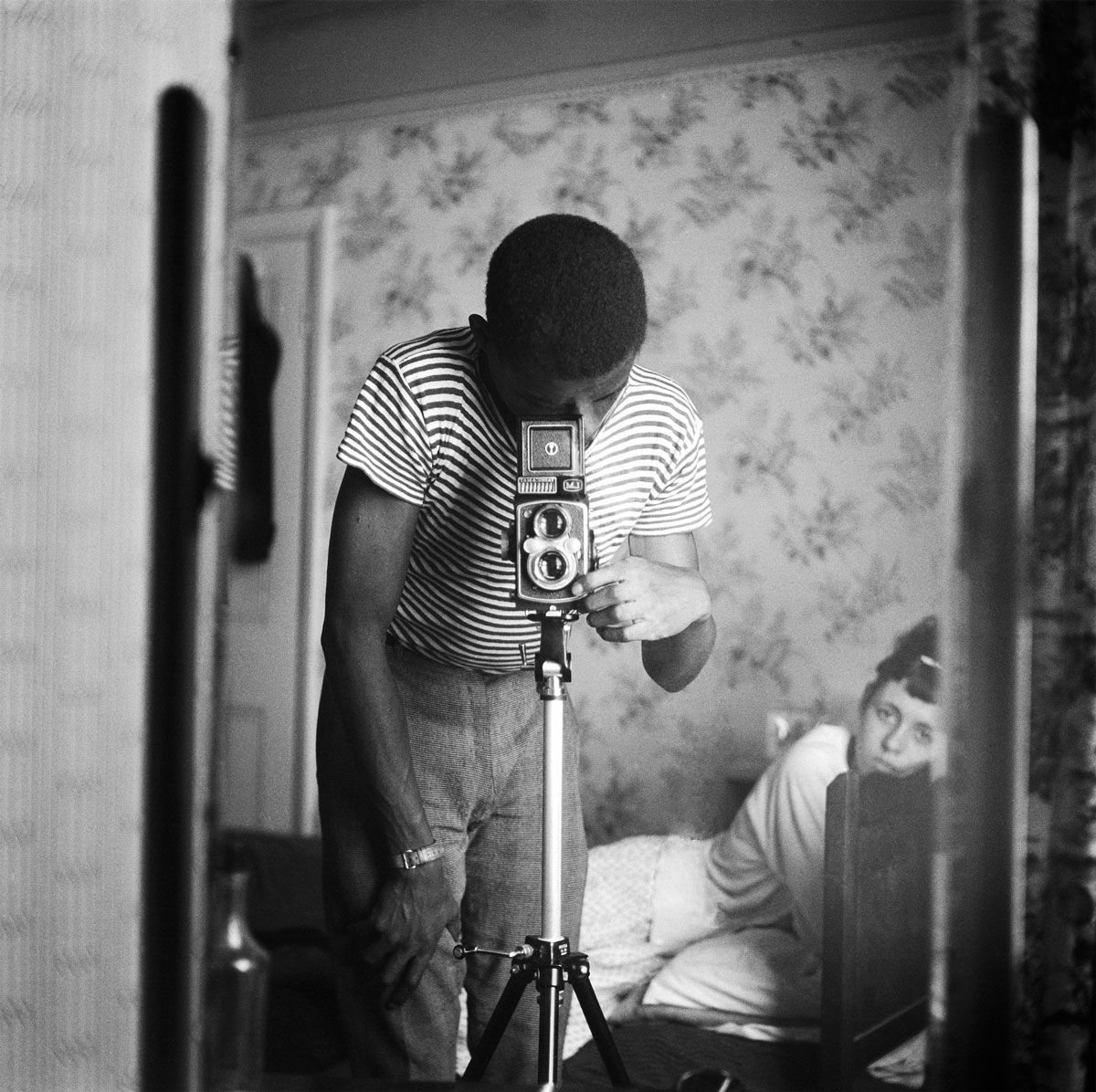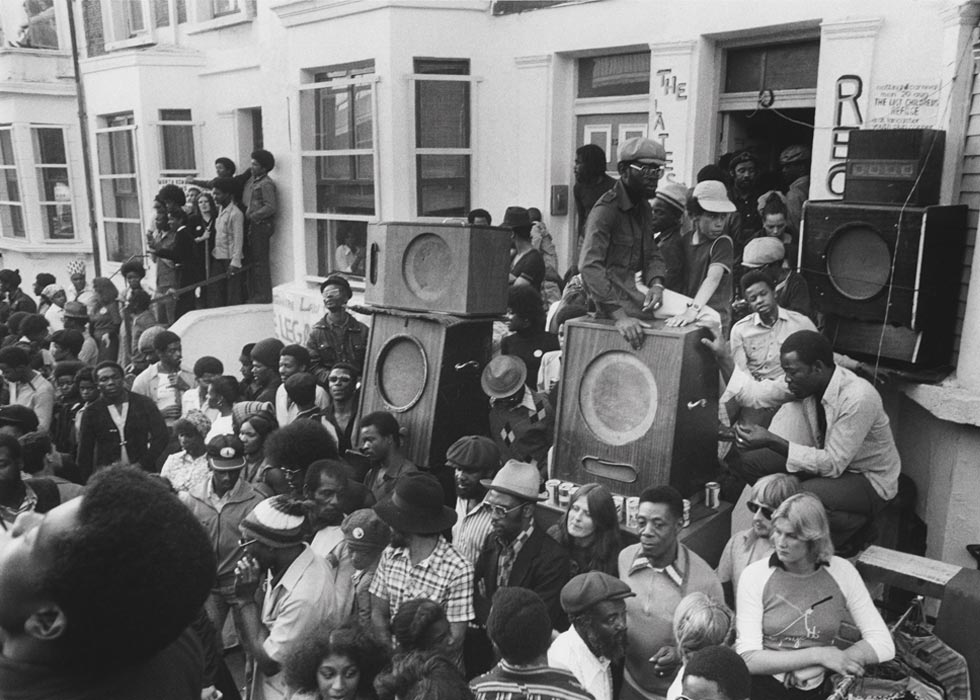Our current exhibition shares the photography of Armet Francis, who has been documenting and celebrating the resilience of African diasporic cultures for more than four decades. The free exhibition, Beyond the Black Triangle, is on display at Autograph until 20 January 2024.
Here we answer four quick questions that are key to the show.

Armet Francis (pictured here in a self-portrait from 1964) was born in Jamaica in 1945 and moved to London in 1955. He is a photographer best known for his social documentary, advertising and fashion images. He began working in a commercial photographic studio as a teenager and went on to forge a career shooting commissions for clients including The Times Magazine, The Sunday Times, BBC and Channel 4 amongst others.
In 1983, Francis became the first black photographer to have a solo exhibition at The Photographers' Gallery, displaying his work from The Black Triangle - People of the African Diaspora series. Francis was a founding signatory of Autograph ABP (formerly known then as the Association of Black Photographers) and it is with delight that we return to and celebrate his work on our 35th anniversary as an organisation.

Francis’ major works over the years have focused on the dispersal of people from Africa to the Americas and the UK, with each broad location providing the three points of what Francis calls 'the Black Triangle'. The work seeks to fulfil what Francis has described as a “personal need to discover the dimensions of the experiences of black people”. This exhibition takes us through Francis’ eminent work, incorporating works from The Black Triangle series alongside other works from his rich photographic career.
Francis arrived in Britain at the young age of 10, an experience which had a lasting impact on the artist and the nature of his work. He came face-to-face with the harsh and unrelenting experiences that were the reality for most Jamaican migrants of the time. Armet recalls: “They didn’t have enough money. They walked into serious racism. They couldn’t even get anywhere to live. They came into a frozen urban jungle, into some serious racism.”
Francis has spoken about his experience of being the only black child in his school in the London Docklands and the profound sense of dislocation he experienced: “England changed me from a smiling little boy into the resilient person I am now. There were a lot of bullies. I had to defend myself everyday. I had to learn their ways of being. The things that made me different were the things I got rid of first.
Photography offered Francis a tool for self-representation, an opportunity to create a personal record of the world around him, capturing the essence of black British identity. In the late 1960s, Francis turned his attention to the Pan-African movement, which sought to foster a sense of solidarity and collaboration among all people of African descent. He shot in the black diasporas of three continents – Europe, Africa, and North America / the Caribbean - with the work taking him back to his hometown in Jamaica for the first time since he’d left in the mid ‘50s.
Beyond the Black Triangle features more than four decades of photography produced by Armet Francis. The majority of works on display are from the late 1960s, alongside some images from the ‘70s when Francis was working in the booming business of fashion photography. At that time, fashion was an overwhelmingly white environment. Francis explains: “There was no history of black photographers in England. I decided to do black images, to capture how black people perform in a certain vernacular, with certain experiences and history with all its social and political implications.”
In a series of photographs taken for 19 magazine, a young women’s fashion magazine, Francis chose to portray black British style against the lively backdrop of Brixton market capturing the bold fashion of the 1970s. At this time, Brixton had developed a large black British community, following migration mainly from Britain's colonies, in a post-war period during which London underwent radical social changes. Francis saw this commission as an opportunity to showcase rare frames of black joy and celebration. As such, Francis began to subvert commissions to his purpose, using fashion photography as a form of social documentary. In contrast to the numerous images from the time of white fashion models photographed in the developing world with black people and their urban spaces as a backdrop, Francis captured the emerging sense of black British style, depicting black people as glamorous and vibrant.
Alongside the fashion photography feature numerous portraits, including a series of works commissioned by Autograph in 2008 titled Windrush. The series makes a critical intervention that gives names to the faces of members of the Windrush generation, who journeyed to the UK from Britain’s colonies to help rebuild Britain after the Second World War.
22 Sep 2023 - 20 Jan 2024
Free exhibition
22 Sep 2023 - 20 Jan 2024
A new exhibition contemplating the complex emotions of displacement and exile
Banner image: Armet Francis, from the series Lambeth and Brixton Tube [detail], 1994. Commissioned by Autograph, London.
Images on page: 1) Armet Francis, Self-portrait in Mirror, 1964. Courtesy the artist and Autograph, London. 2) Armet Francis, Carnival Sound System, London. Courtesy Autograph, London. Supported by the National Lottery through the Heritage Lottery Fund. 3) Armet Francis, from the series Lambeth and Brixton Tube, 1994. Commissioned by Autograph, London. 4) Armet Francis, Fashion Shoot, Brixton Market, London, 1973. Courtesy the artist and Autograph, London. 5) Armet Francis, Sam King from the series Windrush Survivors, 2008. Commissioned by Autograph. Courtesy the artist and Autograph, London.
Autograph is a space to see things differently. Since 1988, we have championed photography that explores issues of race, identity, representation, human rights and social justice, sharing how photographs reflect lived experiences and shape our understanding of ourselves and others.